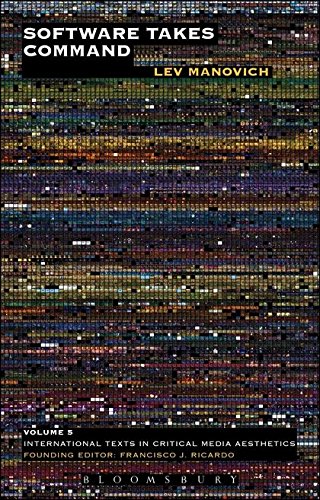Luc Boltanski: Distant Suffering. Morality, Media and Politics (1993/1999)
Filed under book | Tags: · aesthetics, ethics, humanitarianism, mass media, media, moral theory

“Distant Suffering examines the moral and political implications for a spectator of the distant suffering of others as presented through the media. What are the morally acceptable responses to the sight of suffering on television, for example, when the viewer cannot act directly to affect the circumstances in which the suffering takes place? Luc Boltanski argues that spectators can actively involve themselves and others by speaking about what they have seen and how they were affected by it. Developing ideas in Adam Smith’s moral theory, he examines three rhetorical ‘topics’ available for the expression of the spectator’s response to suffering: the topics of denunciation and of sentiment and the aesthetic topic. The book concludes with a discussion of a ‘crisis of pity’ in relation to modern forms of humanitarianism. A possible way out of this crisis is suggested which involves an emphasis and focus on present suffering.”
Keywords and phrases
Bernard Kouchner, Georges Bataille, Maurice Merleau-Ponty, Nietzsche, Marxism, Adam Smith, Hannah Arendt, However, Jean-Paul Sartre, Pierre Klossowski, mediatisation, Maurice Blanchot, Gilles Deleuze, Genealogy of Morality, Marquis de Sade, spectator, Pierre Favre, sentimental literature, Paris, USSR
Originally published in French as La Souffrance à Distance by Editions Métailié, 1993
Translated by Graham D. Burchell
Publisher Cambridge University Press, 1999
ISBN 0521659531, 9780521659536
246 pages
EPUB (updated on 2019-5-15)
Comments (3)Lev Manovich: Software Takes Command (2008–)
Filed under book | Tags: · aesthetics, computing, design, history of computing, media, media design, media theory, software, software studies

“Software has replaced a diverse array of physical, mechanical, and electronic technologies used before 21st century to create, store, distribute and interact with cultural artifacts. It has become our interface to the world, to others, to our memory and our imagination – a universal language through which the world speaks, and a universal engine on which the world runs. What electricity and combustion engine were to the early 20th century, software is to the early 21st century. Offering the the first theoretical and historical account of software for media authoring and its effects on the practice and the very concept of ‘media,’ the author of The Language of New Media (2001) develops his own theory for this rapidly-growing, always-changing field.
What was the thinking and motivations of people who in the 1960 and 1970s created concepts and practical techniques that underlie contemporary media software such as Photoshop, Illustrator, Maya, Final Cut and After Effects? How do their interfaces and tools shape the visual aesthetics of contemporary media and design? What happens to the idea of a ‘medium’ after previously media-specific tools have been simulated and extended in software? Is it still meaningful to talk about different mediums at all? Lev Manovich answers these questions and supports his theoretical arguments by detailed analysis of key media applications such as Photoshop and After Effects, popular web services such as Google Earth, and the projects in motion graphics, interactive environments, graphic design and architecture.”
First version self-published in 2008
Publisher Bloomsbury, July 2013
International Texts in Critical Media Aesthetics series, 5
Creative Commons Attribution Non-Commercial License
ISBN 1623567459, 9781623567453
xi+357 pages
Reviews: McKenzie Wark (Public Seminar, 2015), Alessandro Ludovico (Neural, 2014), Jussi Parikka (Cultural Politics, 2014), Patrick Davison (International Journal of Communication, 2014), Yanni Alexander Loukissas (Journal of Design History, 2014), Brock Craft (Popular Communication, 2014), Warren Buckland (New Review of Film and Television Studies, 2014), Martin E. Roth (Asiascape, 2014), Manuel Portela (MatLit, 2013), Alan Bilansky (Digital Humanities Quarterly, 2019).
Interviews: Michael Connor (Rhizome, 2013), Illya Szilak (HuffPost, 2017).
PDF (2 MB, added on 2019-8-23)
EPUB (7 MB, added on 2019-8-23)
Issuu (added on 2013-9-1)

